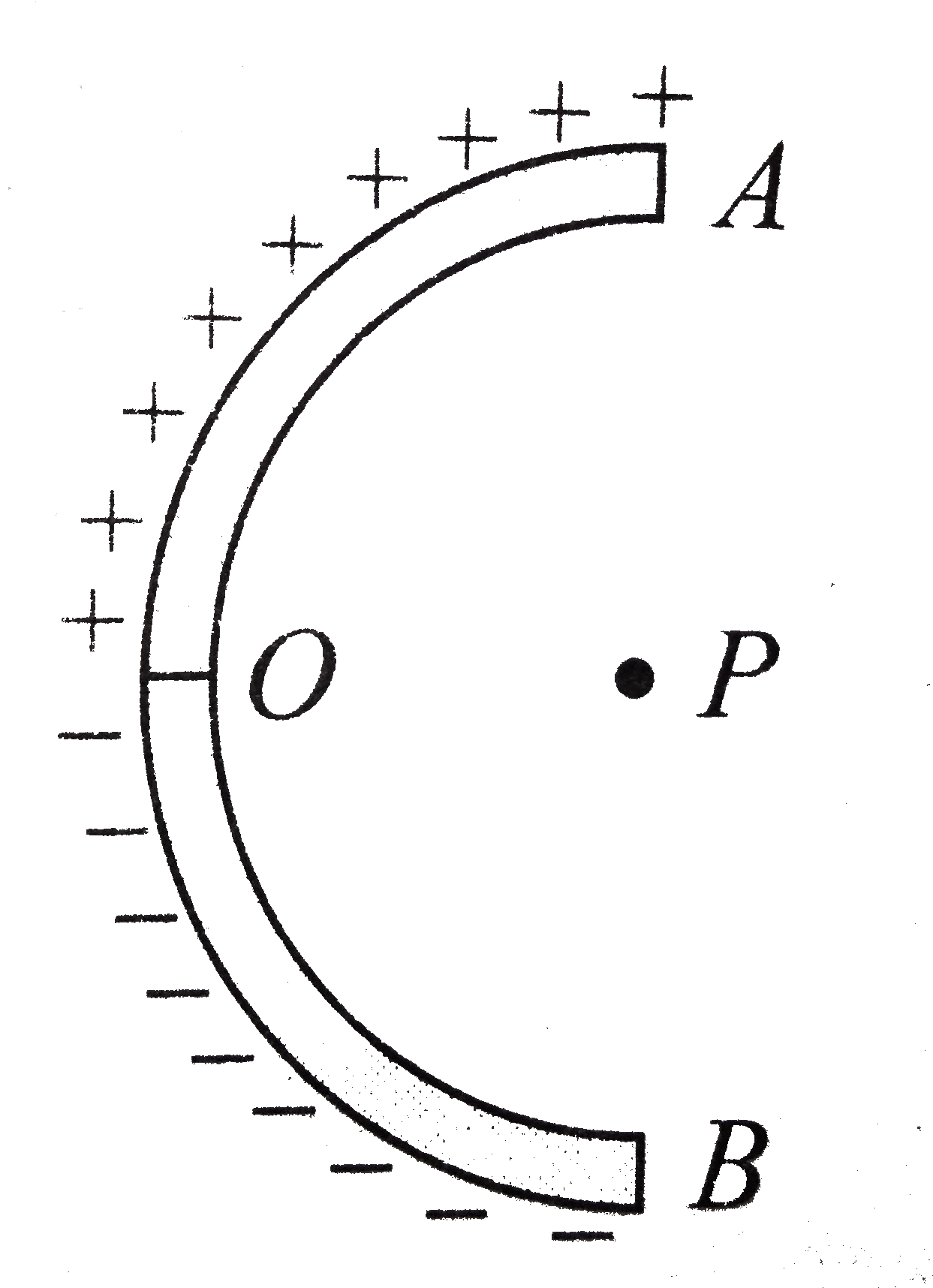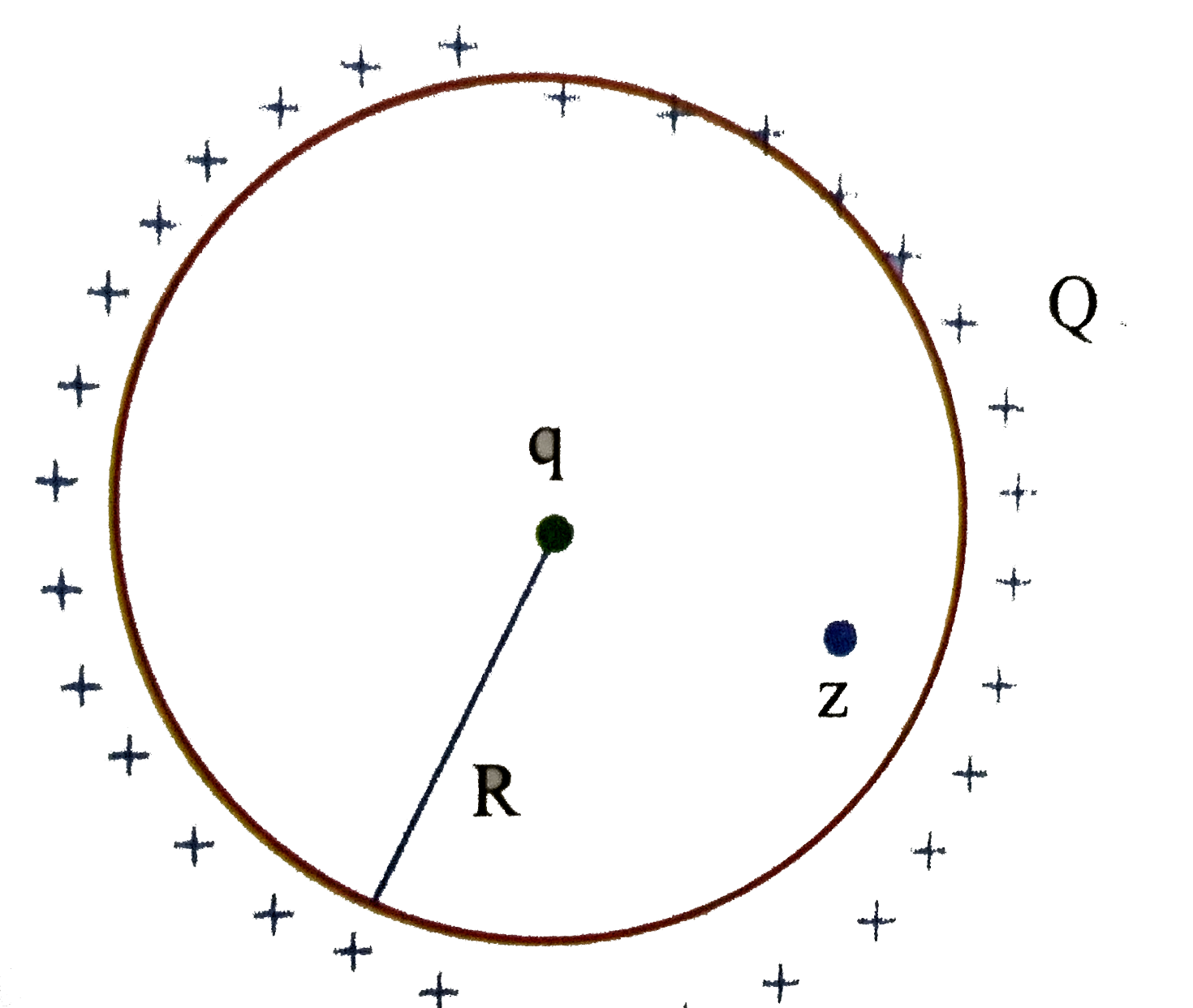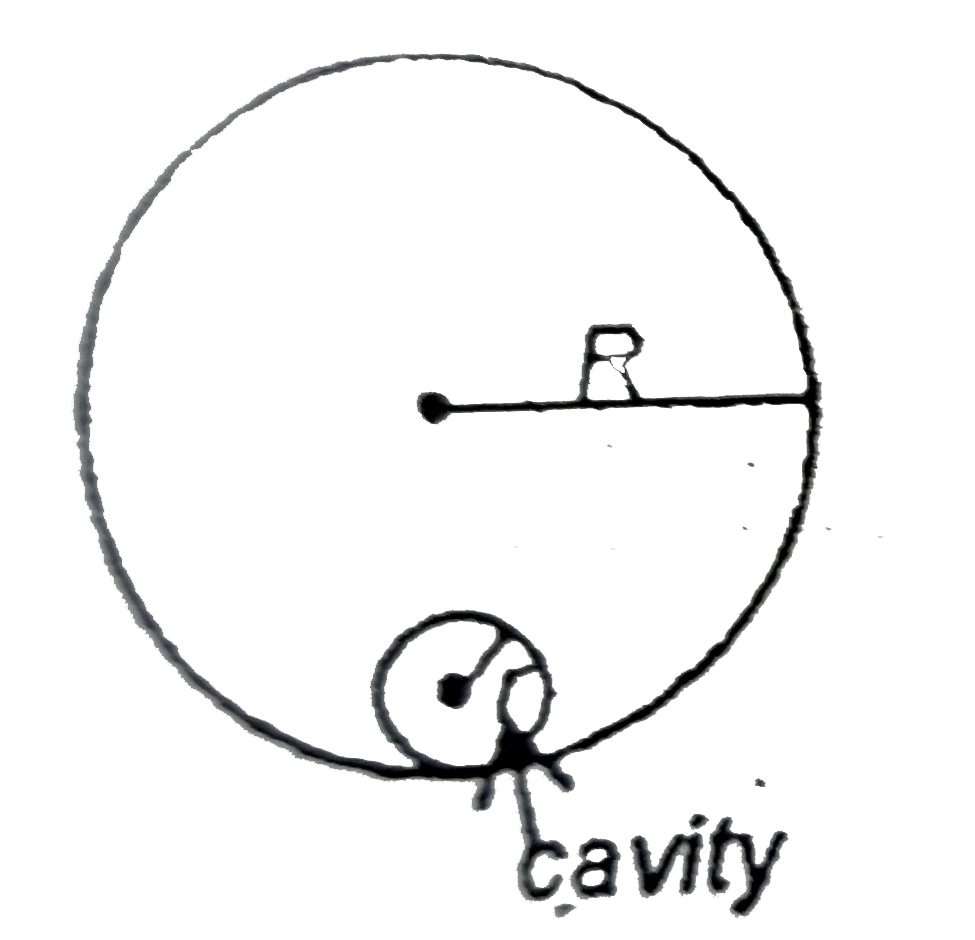Charge q is uniformly distributed over a thin half ring of radius R. The electric field at the centre of the ring is
q2π2ε0R2
q4π2ε0R2
q4πrψ0R2
q2πε0R2
The correct Answer is:A
To find the electric field at the center of a thin half ring of radius R with a uniformly distributed charge Q, we can follow these steps:
Step 1: Define the Linear Charge Density
The charge Q is uniformly distributed over the half ring. The length of the half ring (semi-circumference) is given by:
L=πR
The linear charge density λ is defined as:
λ=QL=QπR
Step 2: Consider a Small Charge Element
Let’s consider a small length element ds on the half ring. The charge dQ on this small element can be expressed as:
dQ=λds
Since ds=Rdθ (where dθ is the angle subtended at the center by the small element), we have:
dQ=λRdθ=QπR⋅Rdθ=Qπdθ
Step 3: Calculate the Electric Field Contribution
The electric field dE due to the small charge dQ at the center of the ring can be expressed using Coulomb's law:
dE=dQ4πϵ0R2
Substituting dQ:
dE=14πϵ0R2⋅Qπdθ=Q4π2ϵ0R2dθ
Step 4: Resolve Electric Field into Components
The electric field dE can be resolved into two components: dEx and dEy. Due to symmetry, the horizontal components (x-components) from opposite sides will cancel each other out, leaving only the vertical components (y-components) contributing to the net electric field:
dEy=dEsinθ
Thus, the total vertical component from both sides is:
dEnet=2dEy=2dEsinθ
Step 5: Substitute and Integrate
Substituting for dE:
dEnet=2⋅Q4π2ϵ0R2⋅sinθdθ
Now, we need to integrate this from θ=0 to θ=π:
E=∫π02⋅Q4π2ϵ0R2⋅sinθdθ
Calculating the integral:
E=Q2π2ϵ0R2⋅(−cosθ)π0=Q2π2ϵ0R2⋅(−cos(π)+cos(0))
=Q2π2ϵ0R2⋅(1+1)=Qπ2ϵ0R2
Final Result
Thus, the electric field at the center of the half ring is:
E=Q2πϵ0R2
The charge Q is uniformly distributed over the half ring. The length of the half ring (semi-circumference) is given by:
L=πR
The linear charge density λ is defined as:
λ=QL=QπR
Let’s consider a small length element ds on the half ring. The charge dQ on this small element can be expressed as:
dQ=λds
Since ds=Rdθ (where dθ is the angle subtended at the center by the small element), we have:
dQ=λRdθ=QπR⋅Rdθ=Qπdθ
The electric field dE due to the small charge dQ at the center of the ring can be expressed using Coulomb's law:
dE=dQ4πϵ0R2
Substituting dQ:
dE=14πϵ0R2⋅Qπdθ=Q4π2ϵ0R2dθ
The electric field dE can be resolved into two components: dEx and dEy. Due to symmetry, the horizontal components (x-components) from opposite sides will cancel each other out, leaving only the vertical components (y-components) contributing to the net electric field:
dEy=dEsinθ
Thus, the total vertical component from both sides is:
dEnet=2dEy=2dEsinθ
Substituting for dE:
dEnet=2⋅Q4π2ϵ0R2⋅sinθdθ
Now, we need to integrate this from θ=0 to θ=π:
E=∫π02⋅Q4π2ϵ0R2⋅sinθdθ
Calculating the integral:
E=Q2π2ϵ0R2⋅(−cosθ)π0=Q2π2ϵ0R2⋅(−cos(π)+cos(0))
=Q2π2ϵ0R2⋅(1+1)=Qπ2ϵ0R2
Thus, the electric field at the center of the half ring is:
E=Q2πϵ0R2
Topper's Solved these Questions
- ELECTROSTATICSBOOK - DC PANDEY ENGLISHCHAPTER - ELECTROSTATICSEXERCISE - Assertion and Reason
15 Videos
- ELECTROSTATICSBOOK - DC PANDEY ENGLISHCHAPTER - ELECTROSTATICSEXERCISE - Match the columns
5 Videos
- ELECTROSTATICSBOOK - DC PANDEY ENGLISHCHAPTER - ELECTROSTATICSEXERCISE - Check point 1.5
20 Videos
- ELECTROSTATIC POTENTIAL AND CAPACITORSBOOK - DC PANDEY ENGLISHCHAPTER - ELECTROSTATIC POTENTIAL AND CAPACITORSEXERCISE - (C) Chapter exercises
50 Videos
- GRAVITATIONBOOK - DC PANDEY ENGLISHCHAPTER - GRAVITATIONEXERCISE - All Questions
135 Videos
Similar Questions
A charge +Q is uniformly distributed over a thin ring of the radius R. The velocity of an electron at the moment when it passes through the centre O of the ring, if the electron was initially at far away on the axis of the ring is (m=mass of electron, K=14πε0)
View SolutionA thin glass rod is bent into a semicircle of radius r. A charge +Q is uniformly distributed along the upper half, and a charge -Q is uniformly distributed along the lower half, as shown in fig. The electric field E at P, the center of the semicircle, is

View SolutionA charge q is uniformly distributed over a quarter circular ring of radius r. The magnitude of electric field strength at the centre of the ring will be
View SolutionElectric charge Q is uniformly distributed around a thin ring of radius a. find the potential a point P on the axis of the ring at a distance x from the centre of the ring .

View SolutionA positive charge Q is uniformly distributed along a circular ring of radius R.a small test charge q is placed at the centre of the ring.

View SolutionA positive charge Q is uniformly distributed along a circular ring of radius R.a small test charge q is placed at the centre of the ring .The

View SolutionA wire of length l and charge q is bent in form of a semicircle. The charge is uniformly distributed over the length. The electric field at the centre of semicircle is
View SolutionA solid sphere of radius R has a spherical cavity of radius r as shown in the figure. If the volume charge density σ is uniformly distributed over the whole volume of the sphere, then electric field strength at the centre of the sphere will be

View SolutionA charge q is unifomly distrybuted over a nonconducting ring of radius R. The ring is rotated about an axis passing through its centre and perpendicular to the plane of the ring with frequency f. The ratio of electric potential to the magnetic field at the centre of the ring depends on.
View SolutionA nonconducting ring of radius R has uniformly distributed positive charge Q. A small part of the ring.of length d, is removed (d<<R). The electric field at the centre of the ring will now be
View Solution
